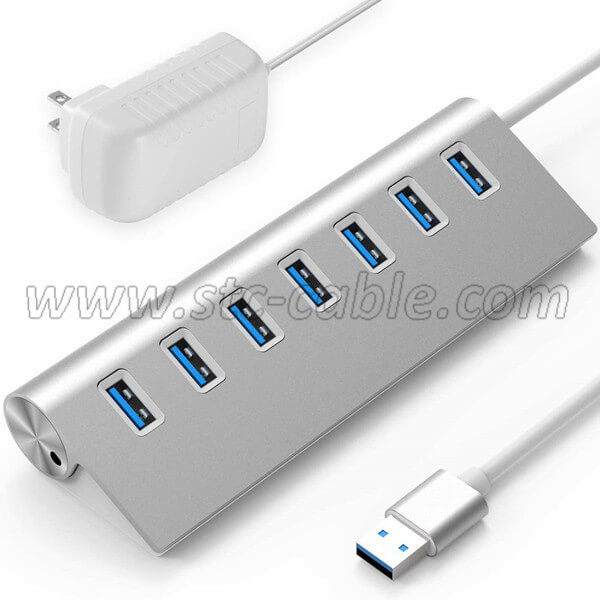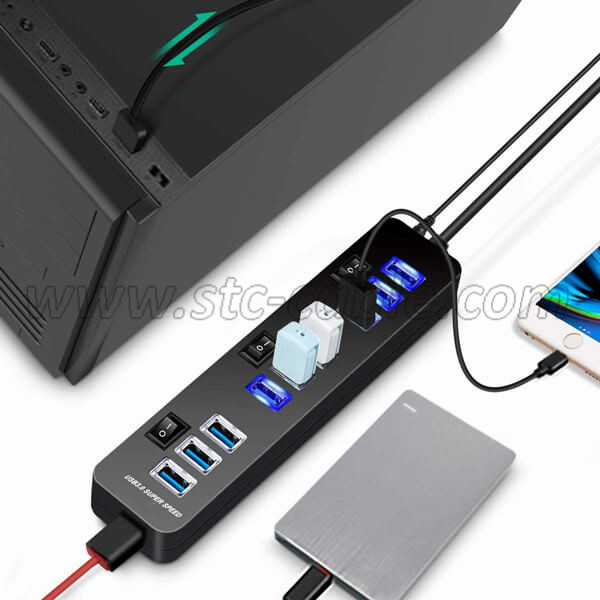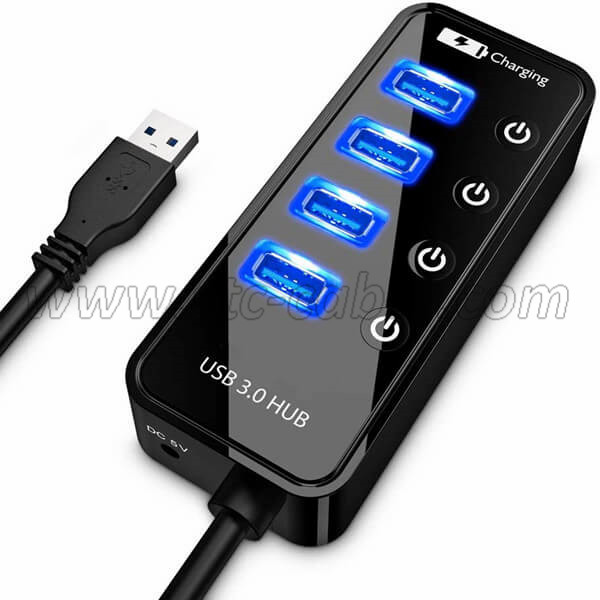A USB hub is a device that expands a single Universal Serial Bus (USB) port into several so that there are more ports available to connect devices to a host system, similar to a power strip. USB hubs are often built into equipment such as computer cases, keyboards, monitors, or printers.
A USB hub is a device that expands a single Universal Serial Bus (USB) port into several so that there are more ports available to connect devices to a host system, similar to a power strip.
USB hubs are often built into equipment such as computer cases, keyboards, monitors, or printers. When such a device has many USB ports, they all usually stem from one or two internal USB ports rather than each port having independent USB circuitry.
Physically separate USB hubs come in a wide variety of form factors: from external boxes (looking similar to an Ethernet or network hub) connectable with a cable, to small designs that can be directly plugged into a USB port (see the "compact design" picture). In the middle case, there are "short cable" hubs which typically use an integral 6-inch cable to slightly distance a small hub away from physical port congestion and of course increase the number of available ports.
Laptop/Notebook computers may be equipped with USB ports, but an external USB hub can consolidate several everyday devices (like a mouse and a printer) into a single hub to enable one-step attachment and removal of all the devices.
Some USB hubs may support power delivery (PD) and charging if they're self-powered and certified, though they may start to be referred to as a simple docking station at this point.
A device that increases the number of USB ports on a PC or Mac. USB hubs are typically used to extend USB sockets to the top of the desk to conveniently plug in USB drives, cameras and portable storage drives.
Self Powered vs. Bus Powered
Self-powered hubs derive their power from a wall outlet and usually provide up to 500 milliamps (mA) at each port. In contrast, bus-powered hubs obtain all their power from the one USB port they plug into. As a result, bus-powered hubs have to split the total 500 mA among all their ports, and the hub itself generally draws 100 mA. A four port bus-powered hub would have 100 milliamps of power at each port.
Keyboards and mice typically need less than 100 milliamps, but USB drives and external storage drives need more. When not plugged into an AC outlet, a self-powered hub may sometimes be able to function as a bus-powered hub.
USB Type C Is Changing the Game
Because USB Type C ports support higher current than Type A ports, bus-powered USB-C hubs can handle more devices
Send your message to us:
Post time: Aug-21-2020



